p53
The p53 tumor suppressor is a 53 kDa nuclear phosphoprotein of 393 amino acids that is encoded by the TP53 gene (20 kb with 11 exons and 10 introns) and characterized by the presence of several structural and functional domains, including a N-terminus, a central core domain, a C-terminal region, a strongly basic carboxyl-terminal regulatory domain, a nuclear localization signal sequence and three nuclear export signal sequence. The p53 is considered as a major “guardian of genome” for its activities in a wide range of cellular events, including cell-cycle regulation, induction of apoptosis, gene amplification, DNA recombination, chromosomal segregation and cellular senescence.
Products for p53
- Cat.No. Product Name Information
-
GC42586
6α-hydroxy Paclitaxel
6α-hydroxy Taxol
6α-hydroxy Paclitaxel is a primary metabolite of the anticancer compound paclitaxel, produced by the action of the cytochrome P450 isoform CYP2C8.
-
GC41643
9(Z),11(E),13(E)-Octadecatrienoic Acid
αEleostearic Acid, αESA, LAF 237
9(Z),11(E),13(E)-Octadecatrienoic Acid (α-ESA) is a conjugated polyunsaturated fatty acid commonly found in plant seed oil.
-
GC40785
9(Z),11(E),13(E)-Octadecatrienoic Acid ethyl ester
αESA ethyl ester, Ethyl αeleostearate
9(Z),11(E),13(E)-Octadecatrienoic Acid ethyl ester (α-ESA) is a conjugated polyunsaturated fatty acid commonly found in plant seed oil.
-
GC40710
9(Z),11(E),13(E)-Octadecatrienoic Acid methyl ester
αESA methyl ester, Methyl αeleostearate
9Z,11E,13E-octadecatrienoic acid (α-ESA) is a conjugated polyunsaturated fatty acid commonly found in plant seed oil.
-
GC65880
ADH-6 TFA
ADH-6 TFA is a tripyridylamide compound. ADH-6 abrogates self-assembly of the aggregation-nucleating subdomain of mutant p53 DBD. ADH-6 TFA targets and dissociates mutant p53 aggregates in human cancer cells, which restores p53's transcriptional activity, leading to cell cycle arrest and apoptosis. ADH-6 TFA has the potential for the research of cancer diseases.

-
GC33356
AM-8735
AM-8735 is a potent and selective MDM2 inhibitor with an IC50 of 25 nM.

-
GC15828
AMG232
AMG 232;AMG-232
AMG232 (AMG 232) is a potent, selective and orally available inhibitor of p53-MDM2 interaction, with an IC50 of 0.6 nM. AMG232 binds to MDM2 with a Kd of 0.045 nM.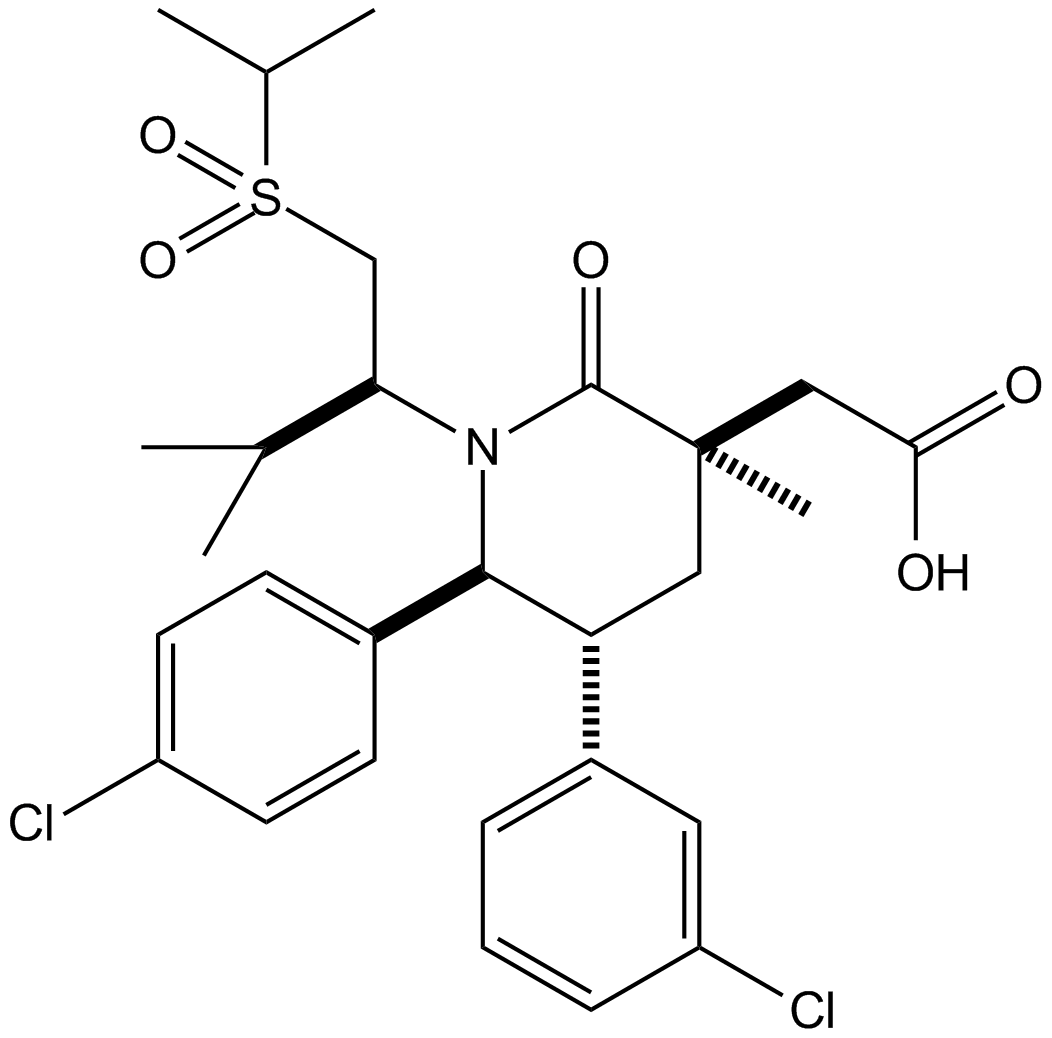
-
GC42785
Amifostine (hydrate)
Ethyol, WR 2721
Amifostine (hydrate) (WR2721 trihydrate) is a broad-spectrum cytoprotective agent and a radioprotector. Amifostine (hydrate) selectively protects normal tissues from damage caused by radiation and chemotherapy. Amifostine (hydrate) is potent hypoxia-inducible factor-α1 (HIF-α1) and p53 inducer. Amifostine (hydrate) protects cells from damage by scavenging oxygen-derived free radicals. Amifostine (hydrate) reduces renal toxicity and has antiangiogenic action.
-
GC61804
Amifostine thiol
Amifostine thiol (WR-1065) is an active metabolite of the cytoprotector Amifostine. Amifostine thiol is a cytoprotective agent with radioprotective abilities. Amifostine thiol activates p53 through a JNK-dependent signaling pathway.

-
GC35367
APG-115
AA-115
APG-115 (APG-115) is an orally active MDM2 protein inhibitor binding to MDM2 protein with IC50 and Ki values of 3.8 nM and 1 nM, respectively. APG-115 blocks the interaction of MDM2 and p53 and induces cell-cycle arrest and apoptosis in a p53-dependent manner.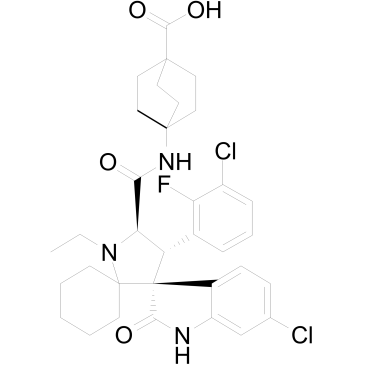
-
GC18136
BH3I-1
BHI1; BH 3I1
Bcl-2 or Bcl-XL inhibitor
-
GC35511
BI-0252
BI-0252 is an orally active, selective MDM2-p53 inhibitor with an IC50 of 4 nM. BI-0252 can induce tumor regressions in all animals of a mouse SJSA-1 xenograft, with concomitant induction of the tumor protein p53 (TP53) target genes and markers of apoptosis.
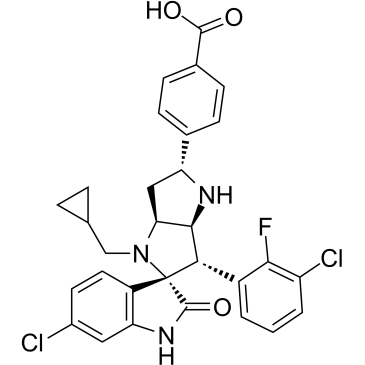
-
GC43189
CAY10681
Inactivation of the tumor suppressor p53 commonly coincides with increased signaling through NF-κB in cancer.

-
GC43190
CAY10682
(±)-Nutlin-3 blocks the interaction of p53 with its negative regulator Mdm2 (IC50 = 90 nM), inducing the expression of p53-regulated genes and blocking the growth of tumor xenografts in vivo.

-
GC14634
CBL0137
CBLC137,Curaxin 137
curaxin that activates p53 and inhibits NF-κB
-
GC15394
CBL0137 (hydrochloride)
CBLC137,Curaxin 137
curaxin that activates p53 and inhibits NF-κB

-
GC43239
Chk2 Inhibitor
SC-203885
Chk2 Inhibitor (compound 1) is a potent and selective inhibitor of checkpoint kinase 2 (Chk2), with IC50s of 13.5 nM and 220.4 nM for Chk2 and Chk1, respectively. Chk2 Inhibitor can elicit a strong ataxia telangiectasia mutated (ATM)-dependent Chk2-mediated radioprotection effect.
-
GC64649
Cjoc42
Cjoc42 is a compound capable of binding to gankyrin. Cjoc42 inhibits gankyrin activity in a dose-dependent manner. Cjoc42 prevents the decrease in p53 protein levels normally associated with high amounts of gankyrin. Cjoc42 restores p53-dependent transcription and sensitivity to DNA damage.

-
GC43297
Coenzyme Q2
CoQ2, Ubiquinone-2, Ubiquinone Q2
Coenzyme Q10 is a component of the electron transport chain and participates in aerobic cellular respiration, generating energy in the form of ATP.
-
GC15225
COTI-2
activates mutant forms of p53

-
GC15840
CP 31398 dihydrochloride
A p53 stabilizing agent

-
GC32911
CTX1
CTX1 is a p53 activator that overcomes HdmX-mediated p53 repression. CTX1 exhibits potent anti-cancer activity in a mouse acute myeloid leukemia (AML) model system.
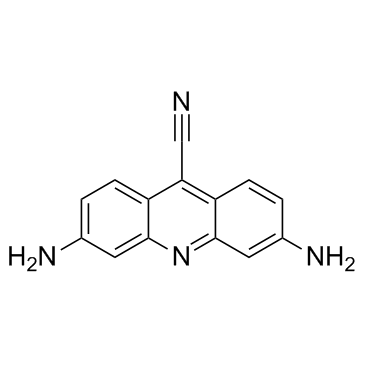
-
GC43408
Deoxycholic Acid (sodium salt hydrate)
DCA, Sodium Deoxycholate
Deoxycholic acid (cholanoic acid) sodium hydrate,a bile acid, is a by-product of intestinal metabolism, that activates the G protein-coupled bile acid receptorTGR5.
-
GC47187
Deoxycholic Acid-d4
Cholanoic acid-d4, DCA-d4
A quantitative analytical standard guaranteed to meet MaxSpec® identity, purity, stability, and concentration specifications
-
GC33384
DPBQ
DPBQ activates p53 and triggers apoptosis in a polyploid-specific manner, but does not inhibit topoisomerase or bind DNA. DPBQ elicits expression and phosphorylation of p53 and this effect is specific to tetraploid cells.
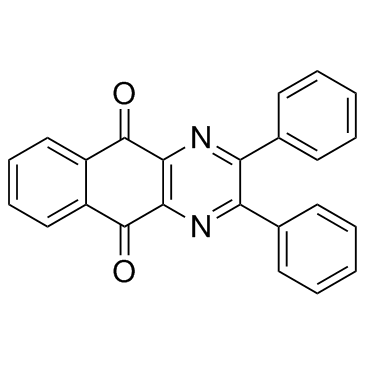
-
GC15258
GN25
p53-Snail binding Inhibitor

-
GC10650
HLI 373

-
GC61608
HLI373 dihydrochloride
HLI373 dihydrochloride is an efficacious Hdm2 inhibitor.

-
GC14755
Inauhzin
INZ
SIRT1 inhibitor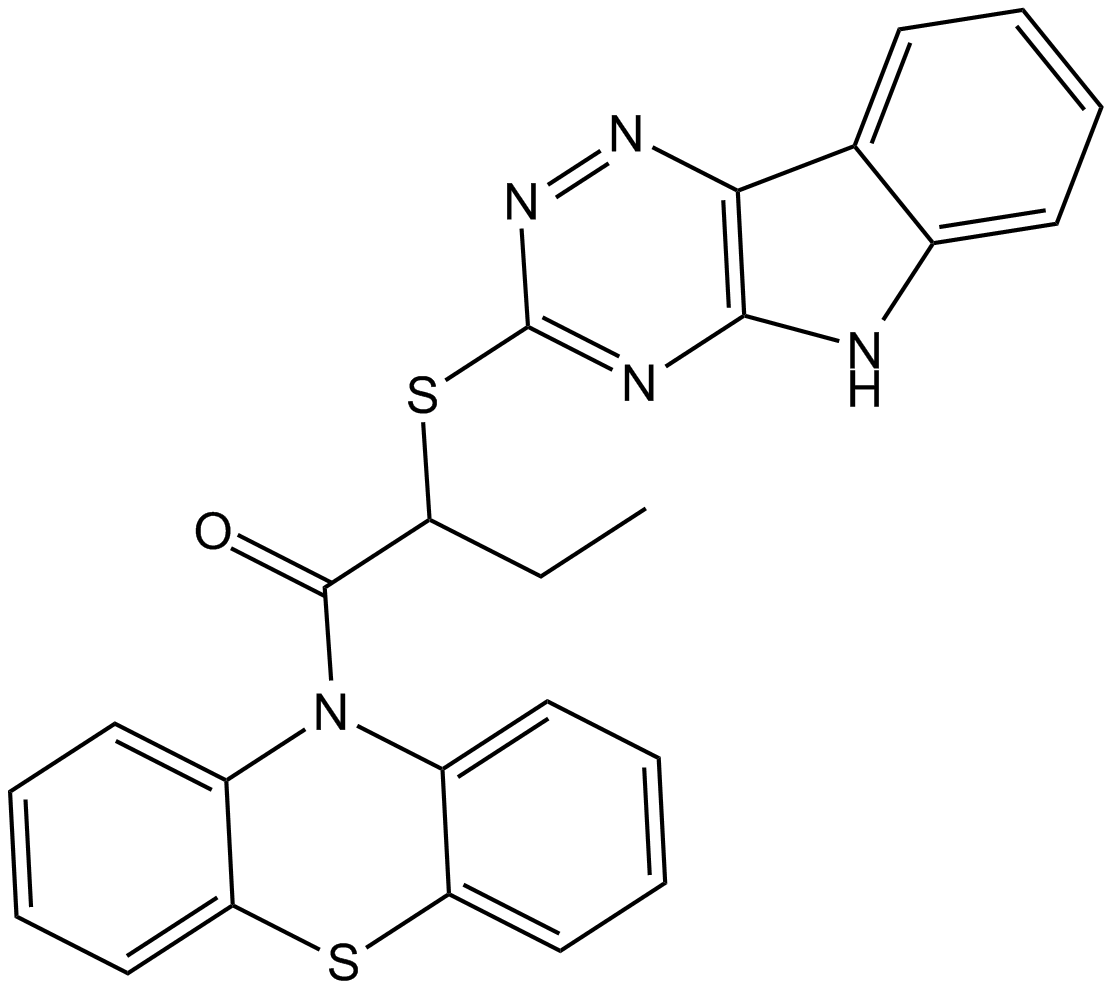
-
GC12117
JNJ-26854165 (Serdemetan)
Serdemetan
An antagonist of MDM2 action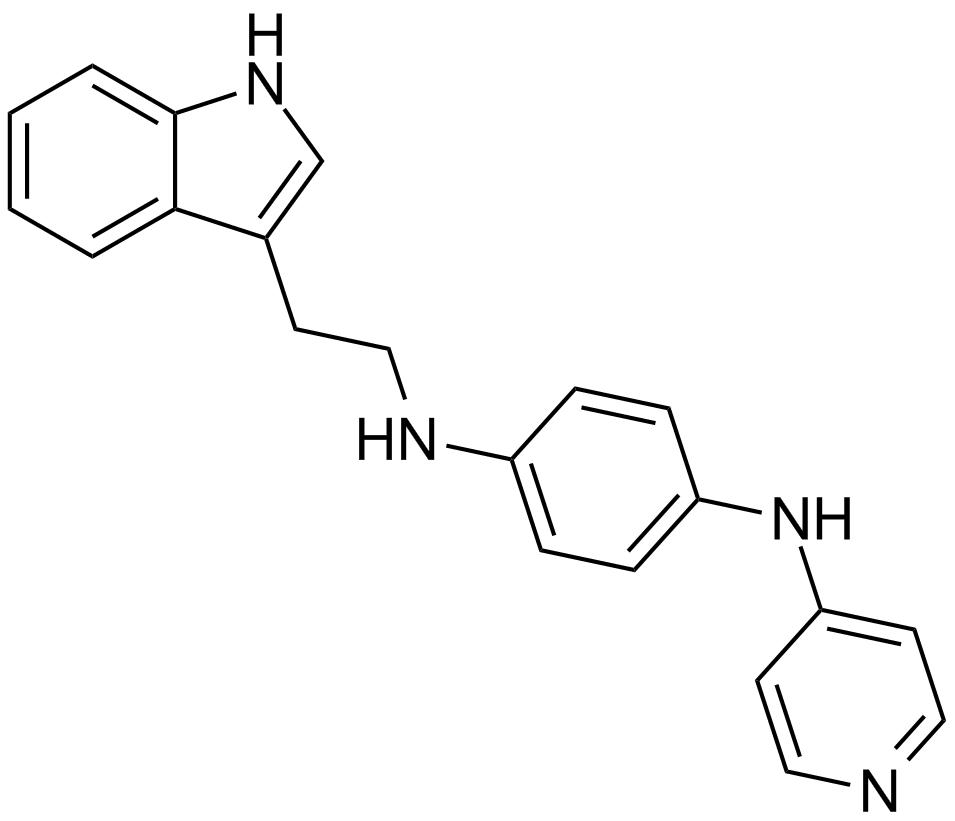
-
GC32919
Kevetrin hydrochloride (4-Isothioureidobutyronitrile hydrochloride)
4-Isothioureidobutyronitrile, NSC 525990
Kevetrin hydrochloride (4-Isothioureidobutyronitrile hydrochloride) is a potent activator of p53, induces apoptosis in TP53 wild-type and mutant acute myeloid leukemia cells. Kevetrin a preferential cytotoxic activity against blast cells.
-
GC62629
MB710
MB710, an aminobenzothiazole derivative, is a stabilizer of oncogenic p53 mutation Y220C. MB710 binds tightly to the Y220C pocket and stabilizes p53-Y220C, with a Kd of 4.1?μM. MB710 shows anticancer activity in p53-Y220C cell lines.

-
GC62716
MD-222
MD-222 is the first-in-class highly potent PROTAC degrader of MDM2. MD-222 consists of ligands for Cereblon and MDM2. MD-222 induces rapid degradation of the MDM2 protein and activation of wild-type p53 in cells. MD-222 has anticancer effects.

-
GC38812
MD-224
MD-224 is a first-in-class and highly potent small-molecule human murine double minute 2 (MDM2) degrader based on the proteolysistargeting chimera (PROTAC) concept. MD-224 consists of ligands for Cereblon and MDM2. MD-224 induces rapid degradation of MDM2 at concentrations <1 nM in human leukemia cells, and achieves an IC50 value of 1.5 nM in inhibition of growth of RS4;11 cells. MD-224 has the potential to be a new class of anticancer agent.

-
GC62557
MDM2-IN-1
MDM2-IN-1 (Compound 30) is a synthetic MDM2-p53 interaction (MDM2) inhibitor and contains the trans (D-)configuration.

-
GC69444
MDM2-p53-IN-16
MDM2-p53-IN-16 is a MDM2-p53 complex inhibitor with an IC50 value of 4.3 nM for dissociating the human MDM2-p532 complex. It can reactivate p53 and induce apoptosis and cell cycle arrest in glioblastoma multiforme (GBM) cells. MDM2-p53-IN-16 can be used for cancer research purposes.
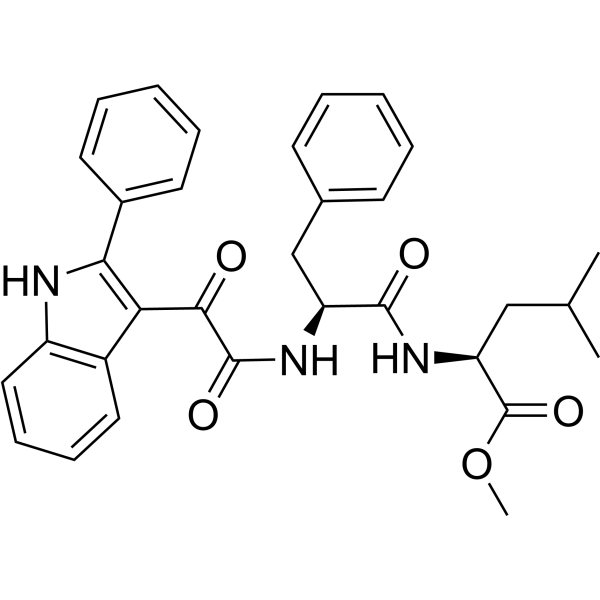
-
GC36605
MI-1061
MI-1061 is a potent, orally bioavailable, and chemically stable MDM2 (MDM2-p53 interaction) inhibitor (IC50=4.4 nM; Ki=0.16 nM). MI-1061 potently activates p53 and induces apoptosis in the SJSA-1 xenograft tumor tissue in mice. Anti-tumor activity.

-
GC62598
MI-1061 TFA
MI-1061 TFA is a potent, orally bioavailable, and chemically stable MDM2 (MDM2-p53 interaction) inhibitor (IC50=4.4 nM; Ki=0.16 nM). MI-1061 TFA potently activates p53 and induces apoptosis in the SJSA-1 xenograft tumor tissue in mice. Anti-tumor activity.

-
GC16296
MI-773
MDM2 inhibitor

-
GC11547
MI-773 (SAR405838)
SAR405838
MI-773 (SAR405838) (MI-77301), an analog of MI-773, is a highly potent and selective MDM2-p53 interaction inhibitor. MI-773 (SAR405838) binds to MDM2 with a Ki of 0.88 nM. MI-773 (SAR405838) induces apoptosis and has potent antitumor activity.
-
GC32881
Milademetan (DS-3032)
DS-3032
Milademetan (DS-3032) (DS-3032) is a specific and orally active MDM2 inhibitor for the research of acute myeloid leukemia (AML) or solid tumors. Milademetan (DS-3032) (DS-3032) induces G1 cell cycle arrest, senescence and apoptosis.
-
GC62621
Milademetan tosylate hydrate
DS-3032b; DS-3032 tosylate hydrate
Milademetan (DS-3032) tosylate hydrate is a specific and orally active MDM2 inhibitor for the research of acute myeloid leukemia (AML) or solid tumors. Milademetan (DS-3032) tosylate hydrate induces G1 cell cycle arrest, senescence and apoptosis.
-
GC12893
MIRA-1
NSC 19630
A mutant p53 reactivator
-
GC62322
MS7972
MS7972 is a small molecule that blocks human p53 and CREB binding protein association. MS7972 can almost completely block this BRD interaction at 50 μM.

-
GC68371
Mutant p53 modulator-1

-
GC19257
MX69
MX69 is an inhibitor of MDM2/XIAP, used for cancer treatment.

-
GC15621
NSC 146109 hydrochloride
XI-011
An activator of p53
-
GC15404
NSC 319726
ZMC1
A p53 reactivator
-
GC16151
NSC348884
nucleophosmin inhibitor

-
GC16179
NSC59984
Restores the p53 signaling pathway

-
GC16051
Nutlin-3
Nutlin 3b
A racemic mixture of (?)-nutlin-3 and (+)-nutlin-3
-
GC10470
Nutlin-3a chiral
Nutlin 3a
Nutlin-3a chiral, an active isomer of Nutlin-3, is a murine double microbody 2 (MDM2) antagonist with IC50 value of 0.09μM .
-
GC12508
Nutlin-3b
Nutlin 3b
MDM2/p53 inhibitor
-
GC12647
NVP-CGM097
CGM097
potent and selective MDM2 inhibitor
-
GC36785
NVP-CGM097 sulfate
CGM097 sulfate
NVP-CGM097 sulfate is a potent and selective MDM2 inhibitor with IC50 of 1.7±0.1 nM for hMDM2.
-
GC19268
NVP-HDM201
NVP-HDM201; HDM201
NVP-HDM201 (NVP-HDM201) is a potent, orally bioavailable and highly specific p53-MDM2 interaction inhibitor.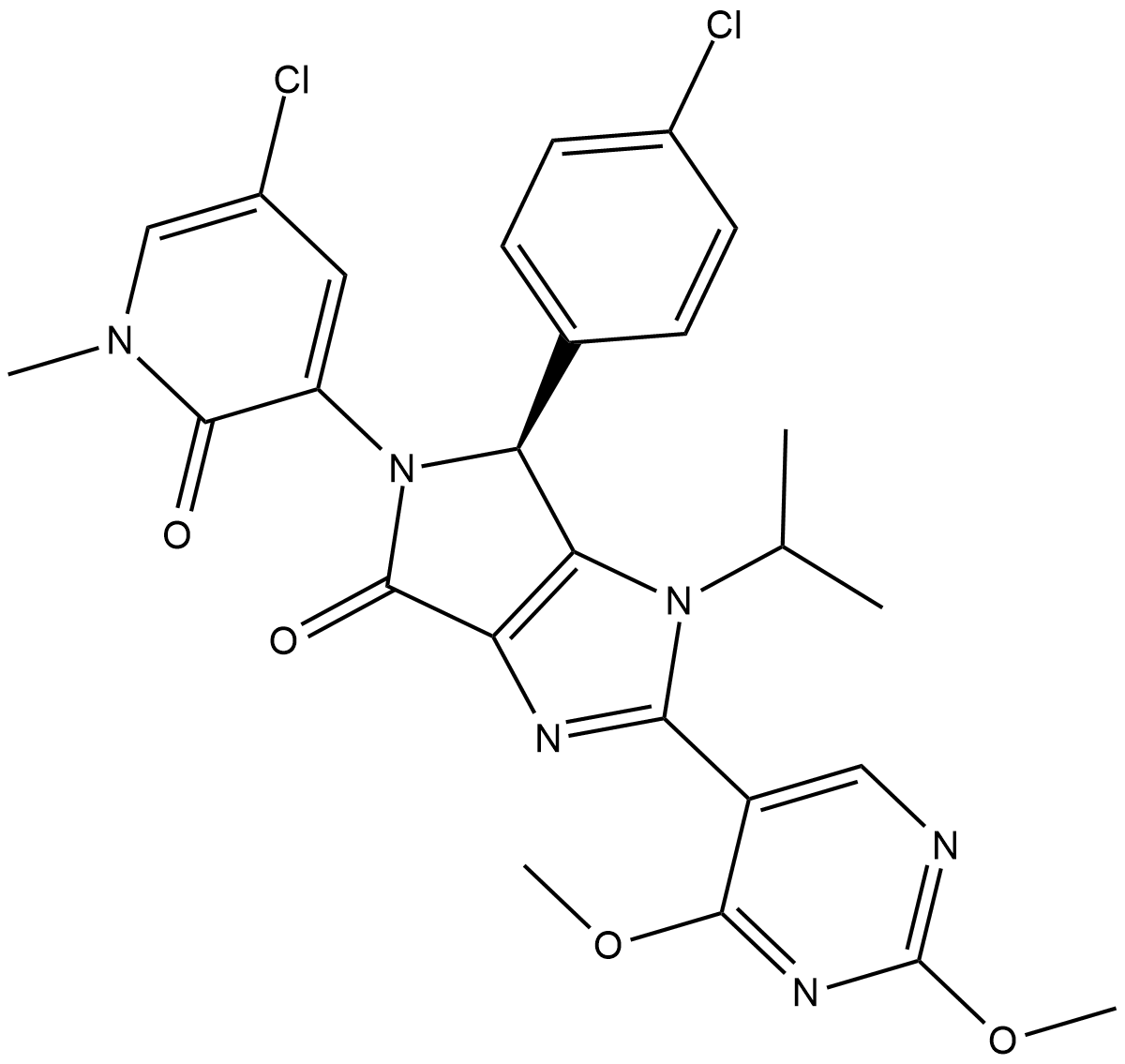
-
GC48652
Olomoucine II
A CDK inhibitor

-
GC11711
ONC201
TIC10
ONC201 (ONC-201) is a potent, orally active, and stable tumor necrosis factor-related apoptosis-inducing ligand (TRAIL) inducer which acts by inhibiting Akt and ERK, consequently activating Foxo3a and significantly inducing cell surface TRAIL. ONC201 can cross the blood-brain barrier.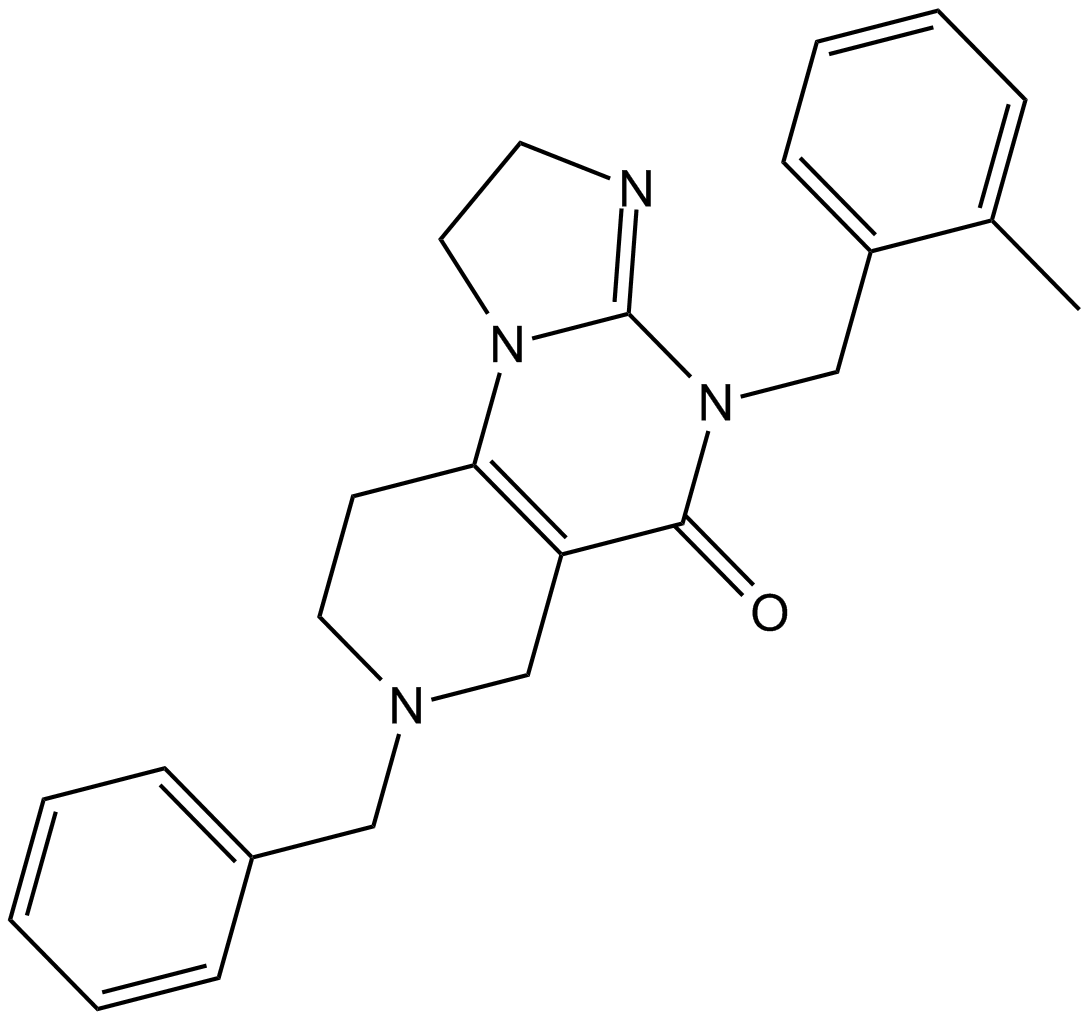
-
GC15613
p-nitro-Cyclic Pifithrin-α
Cyclic pifithrin-α-p-nitro,p-nitro-Cyclic PFT-α
p-nitro-Cyclic Pifithrin-α (PFN-α) is cell-permeable and active-form p53 inhibitor.
-
GC15812
p-nitro-Pifithrin-α
p-nitro-PFT-α
p-nitro-Pifithrin-α, a cell-permeable analog of pifithrin-α, is a potent p53 inhibitor.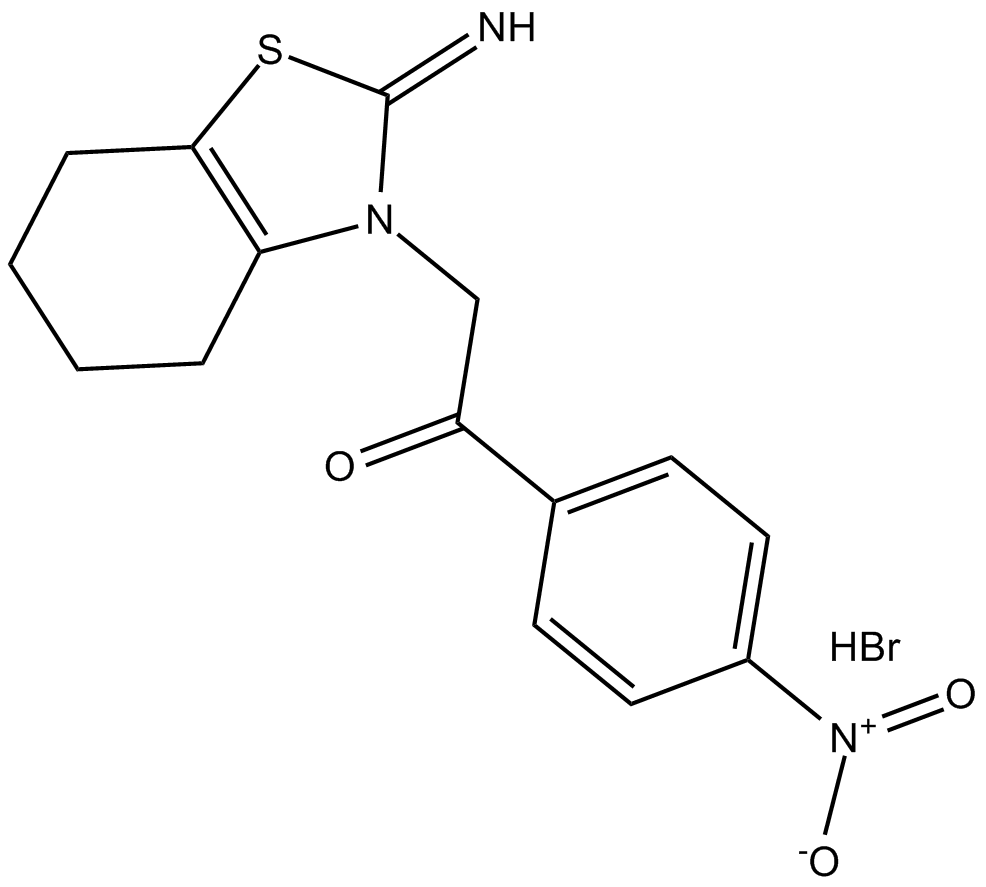
-
GC67765
p53 Activator 5

-
GC69648
p53 Activator 7
p53 Activator 7 is a p53 mutant Y220C (MDM-2/p53) activator with an EC50 of 104 nM. It can bind to p53 mutants and restore their ability to bind DNA (WO2022213975A1; Example B-1).

-
GC36835
p53 and MDM2 proteins-interaction-inhibitor chiral
p53 and MDM2 proteins-interaction-inhibitor chiral (Compound 32) is an inhibitor of the interaction between p53 and MDM2 proteins.

-
GC36836
p53 and MDM2 proteins-interaction-inhibitor dihydrochloride
p53 and MDM2 proteins-interaction-inhibitor dihydrochloride is an inhibitor of the interaction between p53 and MDM2 proteins.

-
GC36837
p53 and MDM2 proteins-interaction-inhibitor racemic
p53 and MDM2 proteins-interaction-inhibitor racemic (Compound 2j) is an inhibitor of the interaction between p53 and MDM2 proteins.

-
GP10036
p53 tumor suppressor fragment
H2N-Lys-Tyr-Met-Cys-Asn-Ser-Ser-Cys-Met-OH
Regulates cell cycle
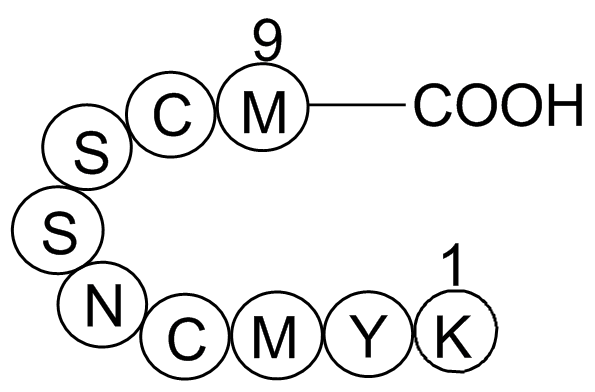
-
GC65961
P53R3
P53R3 is a potent p53 reactivator and restores sequence-specific DNA binding of p53 hot spot mutants, including p53R175H, p53R248W and p53R273H. P53R3 induces p53-dependent antiproliferative effects with much higher specificity than PRIMA-1. P53R3 enhances the recruitment of wild-type p53 and p53M237I to several target gene promoters. P53R3 strongly enhances the mRNA, total protein and cell surface expression of the death receptor death receptor 5 (DR5). P53R3 is used for cancer research.

-
GC45758
Paclitaxel octadecanedioate
1,18-Octadecanedioic Acid-Paclitaxel, ODDA-PTX, PTX-FA18
A prodrug form of paclitaxel
-
GC47853
Paclitaxel-d5
An internal standard for the quantification of paclitaxel

-
GC12658
PhiKan 083

-
GC36896
PhiKan 083 hydrochloride
PhiKan 083 hydrochloride is a carbazole derivative, which binds to the surface cavity and stabilizes Y220C (a p53 mutant), with a Kd of 167 μM, and a relative binding affinity (Kd) of 150 μM in Ln229 cells.

-
GC10538
Pifithrin-α (PFTα)
PFTα
Pifithrin-α(PFT-α) is a p53 inhibitor.Pifithrin-α widely used in neuroscience to block neuronal apoptotic cell death.Pifithrin-α is also a potent stimulant of aryl hydrocarbon receptor (AhR).
-
GC17262
Pifithrin-β
PFTμ, 2Phenylethynesulfonamide
potent p53 inhibitor
-
GC10282
Piperlongumine
Piplartine
Piperlongumine is a natural alkaloid compound extracted from Piper longum L., which has multiple pharmacological activities, including anti-tumor, lipid metabolism regulation, anti-platelet aggregation and analgesic activities.
-
GC32946
PK11007
PK11007 is a mild thiol alkylator with anticancer activity. PK11007 stabilizes p53 via selective alkylation of two surface-exposed cysteines without compromising its DNA binding activity. PK11007 induces mutant p53 cancer cell death by increasing reactive oxygen species (ROS) levels.

-
GC44652
PK7242 (maleate)
The protein p53, often called the 'guardian of the genome,' is a transcription factor that is activated in response to cellular stress (low oxygen levels, heat shock, DNA damage, etc.) and acts to prevent further proliferation of the stressed cell by promoting cell cycle arrest or apoptosis.

-
GC64768
PK9327
PK9327 is a small-molecule stabilizer targeting cavity-creating p53 cancer mutations.

-
GC10315
Plumbagin
NSC 236613, NSC 688284
A natural naphthoquinone
-
GC12086
PRIMA-1
NSC-281668
A re-activator of the apoptotic function of mutant p53 proteins
-
GC37010
PROTAC MDM2 Degrader-1
PROTAC MDM2 Degrader-1 is a MDM2 degrader based on PROTAC technology. PROTAC MDM2 Degrader-1 composes of a potent MDM2 inhibitor, linker, and the MDM2 ligand for E3 ubiquitin ligase.

-
GC37011
PROTAC MDM2 Degrader-2
PROTAC MDM2 Degrader-2 is a MDM2 degrader based on PROTAC technology. PROTAC MDM2 Degrader-2 composes of a potent MDM2 inhibitor, linker, and the MDM2 ligand for E3 ubiquitin ligase.

-
GC37012
PROTAC MDM2 Degrader-3
PROTAC MDM2 Degrader-3 is a MDM2 degrader based on PROTAC technology. PROTAC MDM2 Degrader-3 composes of a potent MDM2 inhibitor, linker, and the MDM2 ligand for E3 ubiquitin ligase.

-
GC37013
PROTAC MDM2 Degrader-4
PROTAC MDM2 Degrader-4 is a MDM2 degrader based on PROTAC technology. PROTAC MDM2 Degrader-4 composes of a potent MDM2 inhibitor, linker, and the MDM2 ligand for E3 ubiquitin ligase.

-
GC15946
ReACp53
inhibit p53 amyloid formation

-
GC10589
RETRA hydrochloride
Antitumor agent

-
GC13019
RG7112
RO5045337
An inhibitor of the MDM2-p53 interaction
-
GC11594
RG7388
RG 7388; RG-7388; ldasanutlin; Ro 5503781
An inhibitor of the MDM2-p53 interaction
-
GC12793
RITA (NSC 652287)
2,5bis(5hydroxymethyl2thienyl) Furan, NSC 652287, Reactivation of p53 and Induction of Tumor Cell Apoptosis
An inhibitor of the p53-HDM-2 interaction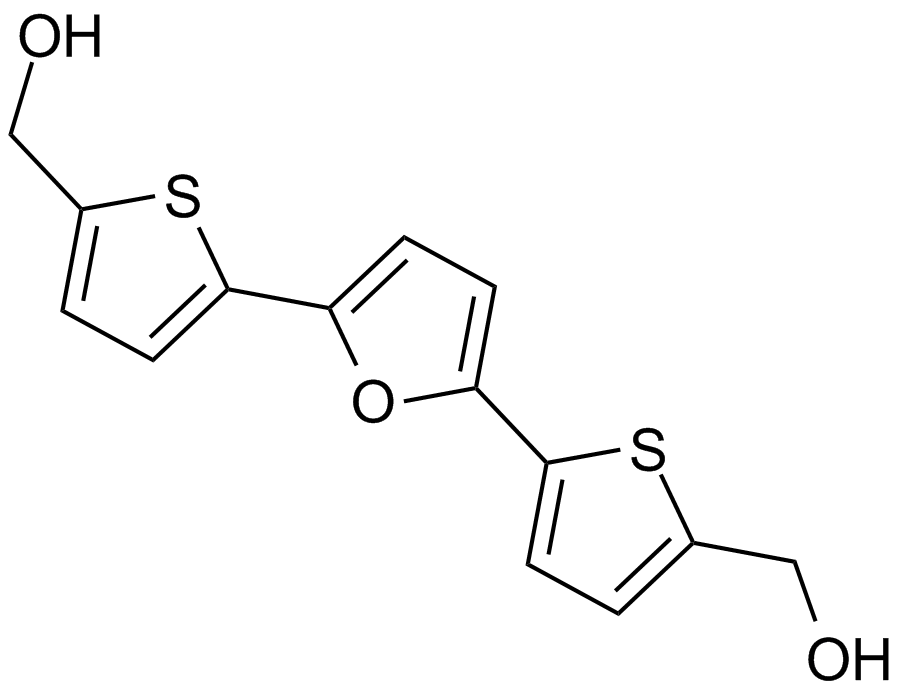
-
GC37549
RO-5963
RO-5963 is a dual p53-MDM2 and p53-MDMX inhibitor with IC50s of ~17 nM and ~24 nM, respectively.

-
GC19312
RO8994
RO8994 is a highly potent and selective series of spiroindolinone small-molecule MDM2 inhibitor, with IC50 of 5 nM (HTRF binding assays) and 20 nM (MTT proliferation assays).

-
GC18624
Roslin-2
Benzylhexamethylenetetramine bromide
Roslin-2 (Benzylhexamethylenetetramine bromide) is a p53 reactivator with anticancer effects. Roslin-2 binds FAK, disrupts the binding of FAK and p53.
-
GC13590
SJ 172550
MDMX Inhibitor II
A small molecule inhibitor of MDMX
-
GC65284
SLMP53-1
SLMP53-1 is a wild-type and mutant p53 reactivator with promising antitumor activity. SLMP53-1 mediates the reprograming of glucose metabolism in cancer cells. SLMP53-1 depletes angiogenesis, decreasing endothelial cell tube formation and vascular endothelial growth factor (VEGF) expression levels.

-
GC16371
Solasodine
NSC 179187, NSC 178260, Purapuridine, Solancarpidine, Solasod-5-en-3β-ol, (-)-Solasodine
An alkaloid with diverse biological activities
-
GC69968
Sulanemadlin
ALRN-6924; MP-4897
Sulanemadlin (ALRN-6924) is a potent p53-based peptide macrocycle. Sulanemadlin is an inhibitor of protein-protein interactions between p53-MDM2, p53-MDMX, or p53 and MDM2 and MDMX. Sulanemadlin can be used for cancer research.

-
GC14165
Tenovin-1
A small molecule activator of p53

-
GC12337
Tenovin-3
Tenovin 3;Tenovin3
p53 activator
-
GC16436
Tenovin-6
SIRT inhibitor and p53 activator

-
GC37761
Tenovin-6 Hydrochloride
Tenovin-6 Hydrochloride, an analog of Tenovin-1, is an activator of p53 transcriptional activity. Tenovin-6 Hydrochloride inhibits the protein deacetylase activities of purified human SIRT1, SIRT2, and SIRT3 with IC50s of 21 μM, 10 μM, and 67 μM, respectively. Tenovin-6 Hydrochloride also inhibits dihydroorotate dehydrogenase (DHODH).

-
GC61352
Triglycidyl isocyanurate
Triglycidyl isocyanurate (TGIC; Teroxirone) is a triazene triepoxide with antiangiogenic and antineoplastic activities.



